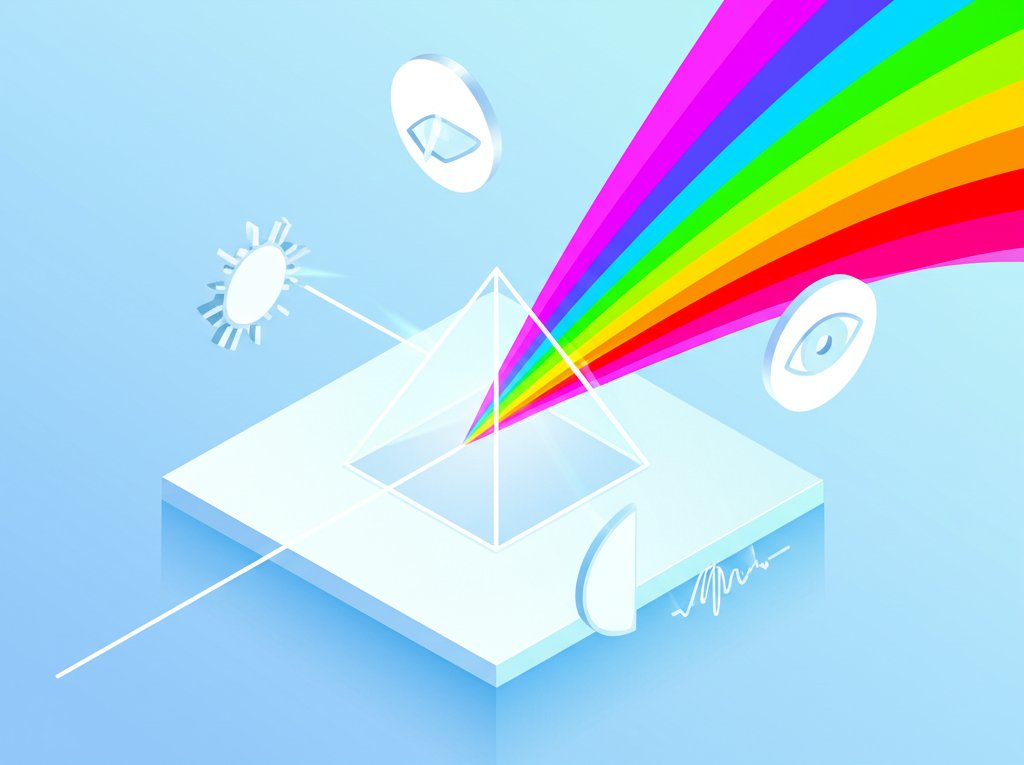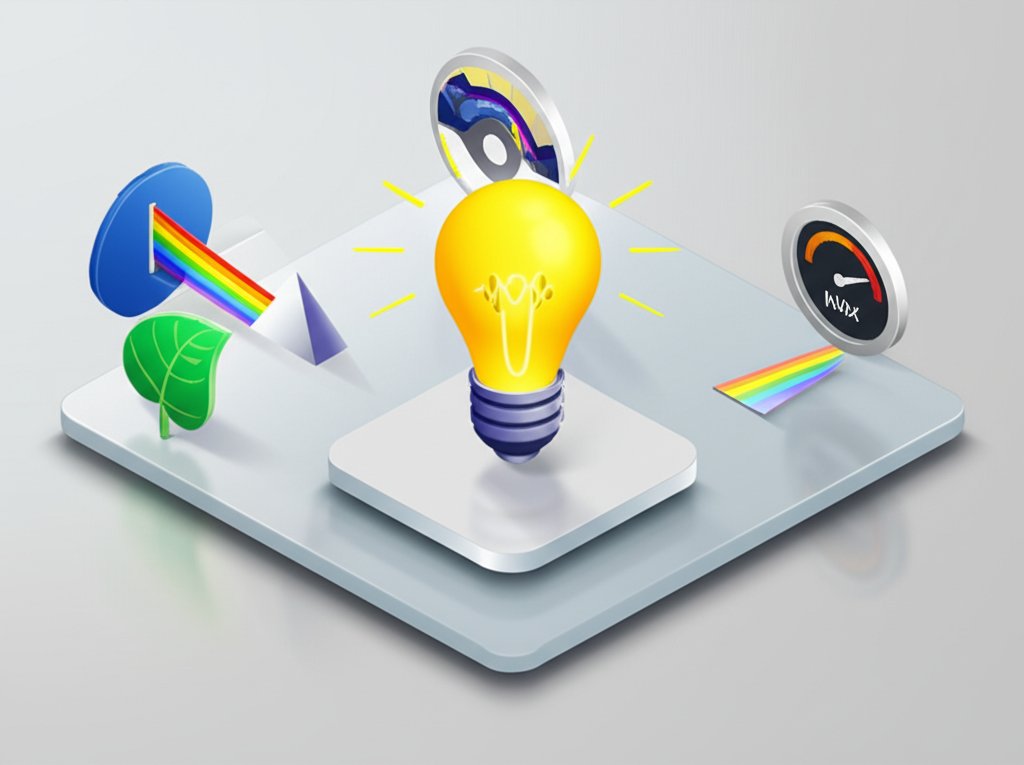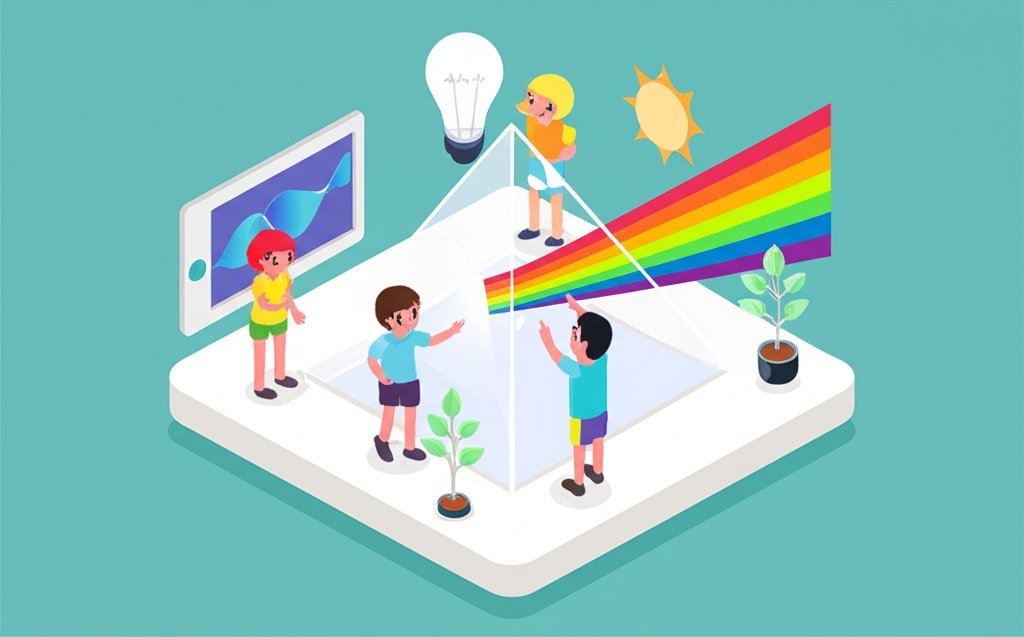Have you ever wondered what makes the world sparkle, rainbows appear, or how plants grow? The secret ingredient is light energy! It’s all around us, invisible yet powerful, and full of amazing surprises. If you’re curious about the wonders of the universe and eager to discover some truly awesome facts about light energy, you’ve come to the right place!
Get ready to zoom through space, travel back in time, and see colors like never before. We’ve got 5 facts about light that are so cool, you’ll want to share them with everyone. These fun facts about light energy are perfect for young scientists and anyone who loves a good mystery. So, let’s peel back the curtain and uncover some incredible light facts for kids!
Fact 1: Light is the Fastest Thing in the Universe!
Want to explore more mind-blowing concepts? You might enjoy diving into even more amazing facts about science, expanding your knowledge of the world around you.
Imagine a superhero that can zip across the entire planet in the blink of an eye. That’s light for you! It travels at an astonishing speed of approximately 186,282 miles (299,792 kilometers) per second. Nothing else in the known universe can move as quickly as light!
Zoom, Zoom, Zoom: The Speed of Light Explained
How fast is that, really? Let’s put it this way:
This incredible speed is why light is so important for everything from sending signals through fiber optic cables to helping us understand distant galaxies. It’s truly a cosmic dash!
Fact 2: When You See a Star, You’re Looking Back in Time!

This is one of the most mind-blowing facts about light energy! Because light takes time to travel, when you look at something far away, you’re not seeing it exactly as it is right now. You’re seeing it as it was when the light left it.
Our Own Sun: An 8-Minute Time Machine
The Sun is about 93 million miles (150 million kilometers) away from Earth. Even at light’s super speed, it takes approximately 8 minutes and 20 seconds for sunlight to reach us. So, when you feel the warmth of the sun on your face, you’re experiencing light that left the Sun over eight minutes ago! If the Sun suddenly disappeared, we wouldn’t even know it for over eight minutes!
Faraway Stars: Ancient Light
Think about how far away the stars are. Some stars are so incredibly distant that their light takes hundreds, thousands, or even millions of years to reach our planet. This means when you gaze at those twinkling lights in the night sky, you are actually looking at light that started its journey long, long ago – perhaps even before dinosaurs roamed the Earth! It’s like having a cosmic time machine in your backyard.
Fact 3: Light Paints Our World with Colors! (Fun Facts About Light Energy)

Have you ever seen a beautiful rainbow or wondered why a red apple looks red? It’s all thanks to light and how it mixes colors! White light, like the light from the Sun, might look plain, but it’s actually a secret blend of all the colors of the rainbow.
The Secret Inside White Light
When white light passes through a prism (a special piece of glass), it splits into all the colors we see in a rainbow: Red, Orange, Yellow, Green, Blue, Indigo, and Violet (ROYGBIV!). This happens because each color of light travels at a slightly different speed and bends at a different angle as it passes through the prism.
Why Do We See a Rainbow?
Raindrops in the sky act like tiny prisms! When sunlight shines through them, the white light splits into its individual colors, creating those spectacular arcs of color across the sky. It’s one of nature’s most beautiful displays of light energy at work.
How Our Eyes See Color (Light Facts for Kids)
Objects don’t actually have color themselves. Instead, they reflect certain colors of light and absorb others. For example, a red apple looks red because it absorbs all the colors of light except red, which it reflects into your eyes. Your eyes then send signals to your brain, and voilà – you see red! Without light, there would be no color to see at all.
Fact 4: Light Helps Plants Make Their Own Food!
This is one of the most vital facts about light energy for life on Earth! Plants are really special because they can make their own food using sunlight. This amazing process is called photosynthesis (say: foe-toe-SIN-thuh-sis).
Photosynthesis Power-Up!
Think of plants as tiny chefs, and sunlight is their secret power-up! Plants capture light energy using a green pigment called chlorophyll (that’s what makes leaves green!). They then use this energy, along with water from the soil and carbon dioxide from the air, to create sugars. These sugars are the plant’s food, giving it the energy to grow big and strong.
Why Light is Life for Earth
As a bonus, during photosynthesis, plants release oxygen back into the air. This oxygen is what we, and many other animals, breathe to survive! So, without light energy, plants couldn’t make food or oxygen, and life as we know it would be impossible. The Sun’s light truly powers life on our planet!
Fact 5: Light is a Super-Shifter: Both a Wave and a Particle!
This might sound a bit like science fiction, but it’s one of the coolest and most mysterious light facts for kids! Scientists have discovered that light doesn’t just behave in one way; it can act like two different things at the same time: a wave and a particle! This is called wave-particle duality.
Acting Like Ocean Waves
Sometimes, light acts just like waves in the ocean. It can travel through space in ripples, spread out, and even bounce off things or bend around corners. This wave-like behavior helps us understand how light creates colors and how it carries information.
Acting Like Tiny Balls (Photons!)
Other times, light acts like it’s made up of tiny little packets or bundles of energy. Scientists call these packets “photons.” Imagine light as a stream of super-tiny, invisible balls zooming through space. When you take a picture with a camera, or when light hits your eye, it’s often these individual “photons” doing the work. Each photon carries a little bit of energy, and together, billions of them make up the light we see.
It’s a tricky idea, but it shows how truly unique and magical light energy is – it’s a wave, it’s a particle, it’s a superhero that can do both!
Conclusion
Isn’t light energy amazing? From speeding across the universe faster than anything else, to letting us peer back in time at distant stars, painting our world with dazzling colors, giving life to plants, and even acting as a mysterious wave and a particle – these 5 mind-blowing light energy facts show just how incredible it is.
We hope these fun facts about light energy have sparked your curiosity and helped you understand a little more about this essential part of our world. Keep exploring, keep questioning, and keep letting light illuminate your path to discovery!
FAQ Section: Your Questions About Light Energy Answered!
Q1: What exactly is light energy?
A1: Light energy is a form of electromagnetic radiation that our eyes can see. It travels in waves and is made up of tiny packets of energy called photons. It’s the only type of energy that is directly visible to humans, allowing us to see the world around us.
Q2: How fast does light travel, and why is that important?
A2: Light travels at an incredible speed of about 186,282 miles (299,792 kilometers) per second. This unmatched speed is crucial because it allows us to see distant objects in space, enables fast communication technologies (like fiber optics), and helps scientists understand the vastness of the universe.
Q3: What are the primary colors of light?
A3: The primary colors of light are red, green, and blue. When these three colors are mixed together in different amounts, they can create all other colors, including white light! This is different from the primary colors of paint (red, yellow, blue).
Q4: Can light travel through anything?
A4: No, light cannot travel through all types of matter. It can pass through transparent materials like air, clear water, and glass, which we call “transparent.” It can also pass partially through “translucent” materials, making things look blurry. However, light cannot pass through “opaque” objects like wood, metal, or thick walls – that’s why they cast shadows!
Q5: Why is light energy so important for life on Earth?
A5: Light energy is absolutely essential for life on Earth! Plants use it for photosynthesis, converting sunlight into food and producing the oxygen we breathe. It also provides warmth, helps regulate our sleep cycles, and allows us to see, helping both humans and animals navigate their environments. Without light, Earth would be a very different, lifeless place.










